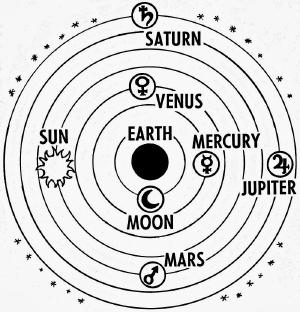Blog
Pay to Play
27 December 2014
There’s new research being touted in the press about a possible solution to the dark energy mystery. The results, published in the peer-reviewed journal PLOS ONE argues that a radical modification of relativity can account for dark energy.1 The work is so abysmally awful that it makes you wonder just how such a paper got accepted for publication.
The central claim of the paper is that our understanding special relativity is wrong. Instead of all motion being relative, which causes time dilation between objects and means that there is no absolute cosmic time frame, the author argues that all motion is measured relative to some absolute time frame. This means that motion can be measured relative to this absolute frame, and things like time dilation only occurs relative to that absolute cosmic frame.
Those familiar with relativity might point out that we’ve long known that the speed of light is a universal constant in all frames of reference, and experiments such as the Michelson-Morley experiment showed that there is no absolute reference frame. Even things like GPS satellites show that relativity works, so how does one argue that there’s an absolute reference frame? As the author points out, to agree with observation, you just have to assume that the absolute frame of the universe is centered on the Earth and rotating with it.
You heard that right. The author argues that in terms of this cosmic reference frame, the Earth doesn’t move.
 Wikipedia
WikipediaThe author then goes on to argue that because of this the galaxies moving away from us are time dilated relative to our absolute frame, and since more distant galaxies are moving relative to closer galaxies, they are further time dilated. What looks like an exponential expansion of is therefore simply an effect of absolute time dilation relative to the Earth’s at-rest frame. Dark energy is therefore an illusion due to our special place in the universe.
Any physicist worth her salt would flag this work as seriously lacking. The author himself should have caught the glaring flaws in this work. But then the author is actually a cellular biologist with no publishing record in physics. Throwing all relativity out the window in order to create a “just-so” model of cosmology is what he does in his spare time. The editor of the journal should have flagged the work as well, but then his background is also biology. It’s not clear if any qualified physicist actually reviewed this work.
Then again, PLOS ONE is a different kind of journal, because it is open access. With traditional journals, libraries and individuals pay subscriptions for access to their articles. These subscriptions aren’t cheap, so the journals live or die based upon their quality. For this reason, the journals generally decide whether to publish not only on the accuracy of the paper, but on the potential impact the work may have. More prestigious journals can charge higher subscriptions, and are therefore more selective about what they publish. PLOS ONE makes all of their work freely available to the public. To cover costs, they charge a publishing fee. In the case of PLOS ONE, that’s about $1,400 per paper.
Because income is generated per paper rather than per subscription, PLOS ONE reviews submissions only for “technical accuracy,” regardless of the quality of the work. Because of this, the quality of articles varies widely. Some are quite good, while others (like this one) not so much. Open source journals have been controversial. On the one hand they get rid of the obscenely expensive paywall that limits access to research (much of which is publicly funded), but on the other hand they can be seen as “pay to play” paper mills where anyone with enough cash can have the prestige of peer-reviewed work. While there are predatory open source journals that will publish literally anything at a cost, PLOS ONE has been seen as one of the better open source journals. But it seems in physics at least, the bar is discouragingly low.
Of course once a paper is peer reviewed, it starts getting touted in the press. The author’s home university had a press release praising the work as a new breakthrough in cosmology, which then got picked up by science news sites and posted almost verbatim, because who has the time or money to actually do science journalism. By the time it’s brought to my attention I can either ignore it and hope it doesn’t get too popular, or try to debunk yet another over-hyped science claim.
It would be easy to feel angry about this kind of thing, but mostly I’m disappointed. I’d like to see open access publishing succeed, because I honestly believe research (particularly publicly funded research) should be freely available to everyone. But when PLOS ONE publishes articles of this quality, it’s not helping advance the cause.
Kipreos, Edward T. “Implications of an absolute simultaneity theory for cosmology and universe acceleration.” PloS One 9.12 (2014): e115550. ↩︎